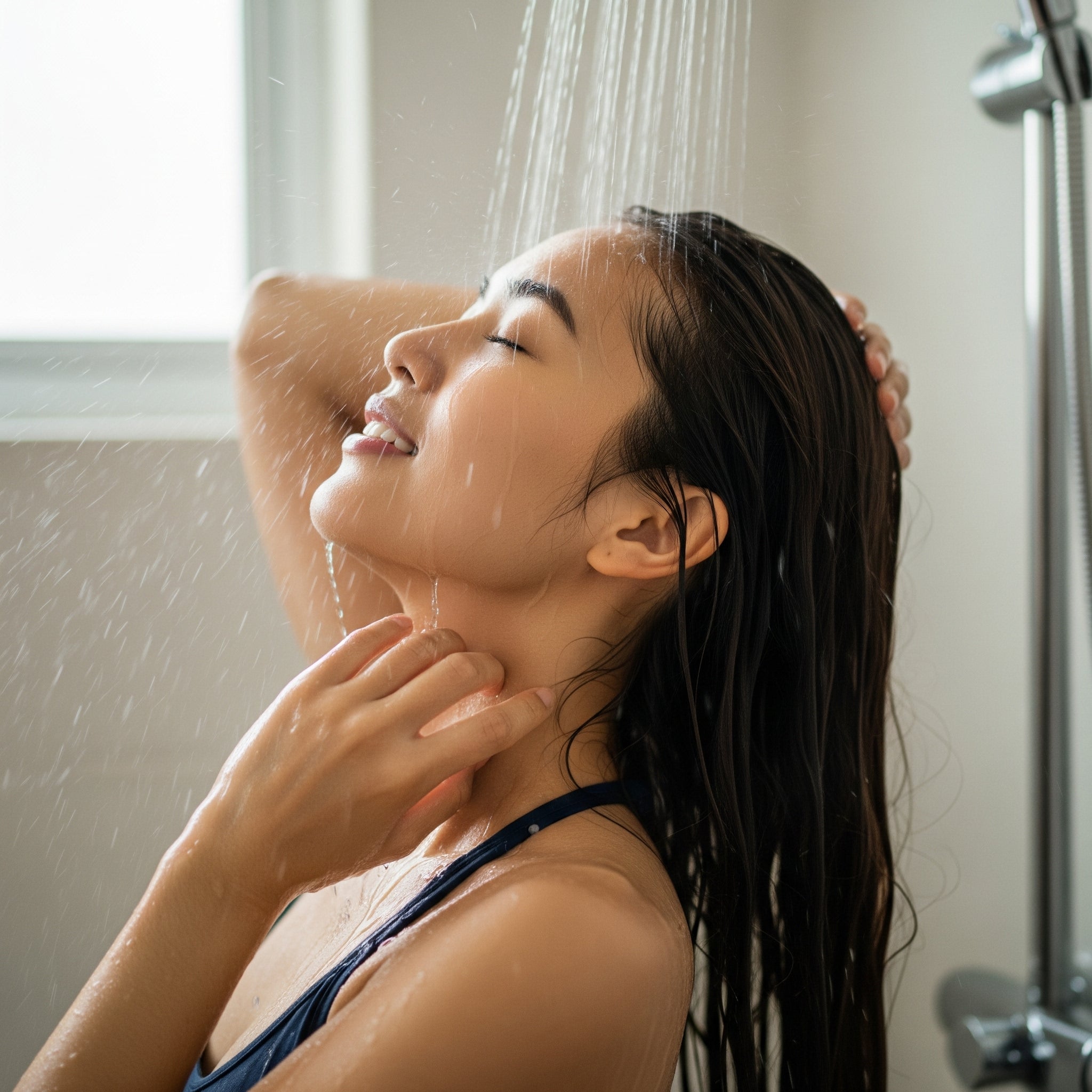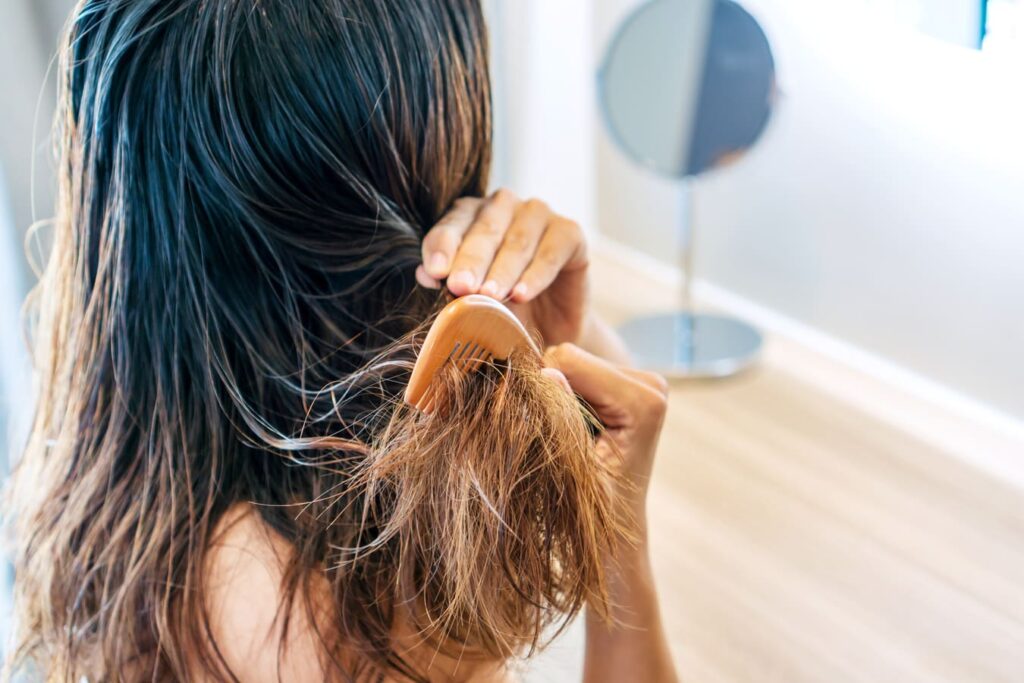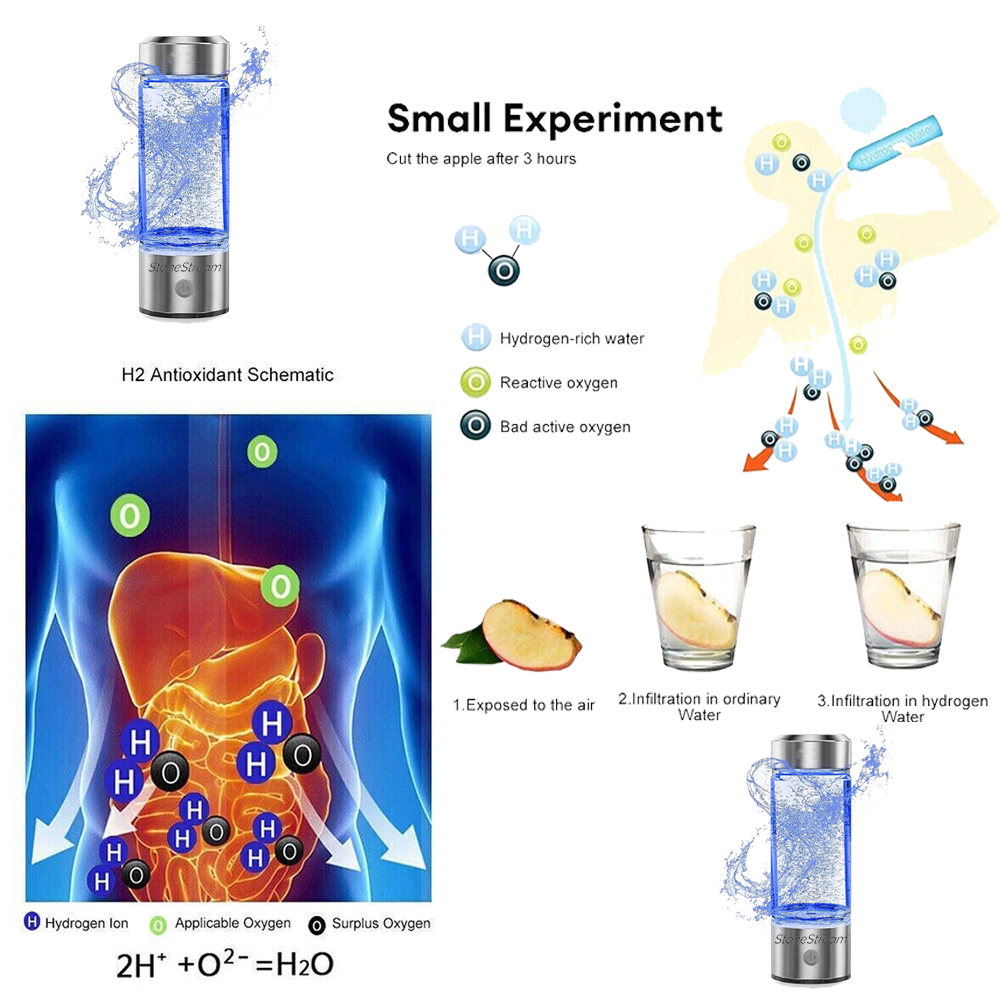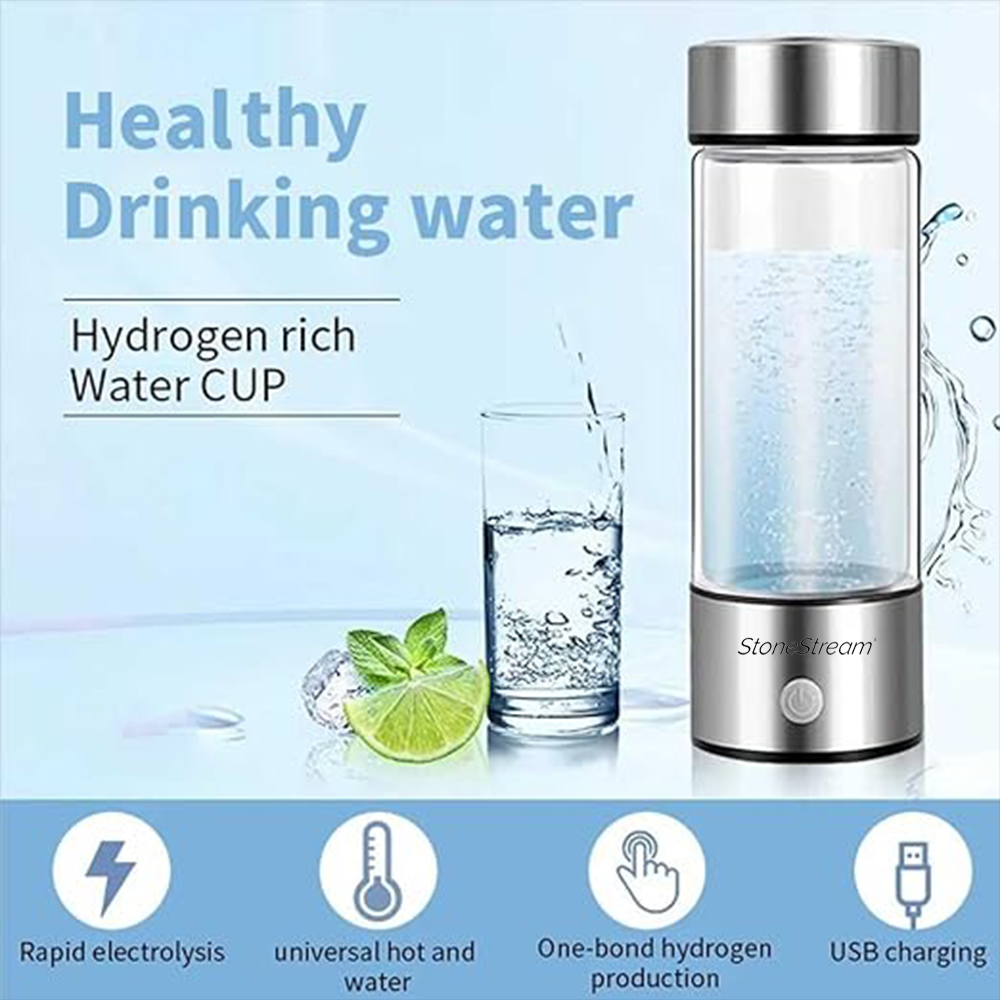I. Introduction: The Unseen Enemy in Your Bathroom – Could Your Shower Be the Issue?
Many individuals can relate to this scenario: stepping out of the shower expecting to feel refreshed, with hair that’s ready to cooperate and skin that feels soft and supple. But instead, the reality is often another bout of frizz, a scalp that feels tight and itchy, or skin that just seems lackluster, despite diligent efforts and the newest, most raved-about conditioner. It's a common cycle of frustration where blame is easily cast on external factors like the weather, stress, or perhaps that new styling product that isn't living up to its promises. People invest significantly in beauty products, and when these items don't yield the expected results, disappointment naturally follows.
However, what if the real culprit behind these persistent hair and skin woes is something encountered every single day, something so commonplace it's often overlooked? What if the issue lies not with the products, but with an environmental factor that prevents those products from performing optimally?
The central question to consider is this: could your shower water be the problem? That seemingly innocent might be carrying invisible troublemakers that are secretly sabotaging hair health and skin glow. This possibility offers a new perspective, suggesting an underlying issue that, once addressed, could allow chosen beauty products to finally work their magic.
This exploration aims to pull back the shower curtain, revealing exactly what might be lurking in tap water – from harsh minerals to chemical residues. Understanding these hidden elements and their effects is the first step toward resolving those frustrating beauty battles and discovering a simple, game-changing solution for healthier, happier hair and skin.
II. The Invisible Damage: Unmasking the Troublemakers in Your Tap Water
The water flowing from the showerhead might appear clean and pure, but it can often contain a cocktail of substances that, over time, take a toll on hair and skin. Understanding these components is key to recognizing their impact.
A. Hard Water Woes: The Mineral Menace That’s Weighing You Down
Hard water can be visualized as water carrying excess baggage, specifically high concentrations of dissolved minerals like calcium and magnesium. While these minerals are not generally harmful to ingest – in fact, some research suggests potential health benefits from drinking hard water – they can significantly disrupt hair and skin health. This is not an uncommon issue; over 85% of households in the United States contend with hard water , and its prevalence is global , making it a widespread concern.
When showering, these minerals form an invisible film or coating on the hair and scalp. This mineral buildup acts like a shield, preventing essential moisture from penetrating the hair shaft. The consequence is often persistent dryness and a straw-like texture, regardless of the conditioning treatments applied. This barrier effect explains why even expensive hair treatments might seem ineffective; they simply cannot bypass the mineral layer to nourish the hair.
Furthermore, this mineral film interferes with the scalp's natural oil production and distribution. These natural oils are crucial for maintaining a healthy scalp and hydrated hair. When their function is impeded, the scalp can become dry, flaky, and itchy, creating an unhealthy environment that is not conducive to optimal hair growth. The buildup also makes it challenging for shampoos and conditioners to lather effectively or rinse out completely, leaving hair feeling weighed down, dull, and never truly clean. This cycle of dryness combined with product and mineral residue exacerbates the problem, making hair look and feel progressively worse.
The impact on hair texture and appearance is noticeable. Hair often looks dull, flat, and lifeless, devoid of its natural shine. The mineral coating can roughen the hair cuticle, leading to increased tangles, frizz, and general unmanageability. Styling becomes a frustrating daily endeavor. Over time, this constant stress on the hair can weaken its structure. Calcium, for instance, can react with proteins in the hair fibers, causing them to stiffen and become more susceptible to breakage and split ends. This isn't merely a cosmetic issue; it's a progressive degradation of hair health. The potential for blocked hair follicles due to mineral buildup further suggests that hard water can impact hair growth and vitality in the long term , elevating the problem beyond a temporary annoyance to a more critical concern requiring a preventative solution.
Skin is not spared from these effects. The same mineral residue that plagues hair can leave skin feeling tight, dry, and irritated after showering, and may even contribute to clogged pores.
B. The Chlorine Conundrum: More Than Just a Pool Problem
Chlorine is widely recognized for its use in swimming pools, but it's also a common disinfectant in municipal tap water systems. While vital for ensuring safe drinking water, daily showering in chlorinated water can have unintended consequences for hair and skin.
Chlorine is a reactive chemical that primarily works by stripping away the natural, protective oils (sebum) from the hair and scalp. As noted by dermatologist Dr. Marnie B. Nussbaum, this stripping action adversely impacts the hair's cuticle and its primary protein, keratin. These natural oils are the hair and scalp's first line of defense; once removed, the hair and scalp are left exposed and vulnerable to a host of further issues.
The immediate fallout is dryness and brittleness. Without these essential oils, hair becomes parched, straw-like, and significantly more prone to breakage and split ends. The scalp can also suffer, manifesting as dryness, itchiness, redness, and flakiness. An uncomfortable scalp is not merely an irritation; it's an unhealthy environment that can hinder healthy hair growth.
For those who color their hair, chlorine presents a particular challenge. It can cause expensive salon color to fade much more rapidly. Moreover, chlorine can induce a chemical reaction that alters hair color, sometimes leading to undesirable brassy tones or even a greenish hue, particularly in lighter or blonde hair. While chlorine itself acts as a bleach, the greenish discoloration is often attributed to the oxidation of metals like copper by chlorine.
Individuals with hair that is already colored, chemically treated, damaged, or naturally fine are at an even higher risk for severe chlorine damage. Such hair is typically more porous and therefore more vulnerable to absorbing chlorine and sustaining further damage. The damage from chlorine is often cumulative , meaning that each shower in chlorinated water can progressively worsen the condition of the hair. This creates a challenging situation, particularly for those who invest time and money in hair treatments, as their efforts are continually undermined by the water quality.
C. Unseen Impurities: The Hidden Heavyweights and Grimy Guests
Beyond hard water minerals and chlorine, tap water can harbor other unwelcome substances, such as heavy metals and fine sediment. These "invisible enemies" add another layer of complexity to water quality concerns.
Factors like aging plumbing infrastructure or industrial pollution can lead to the presence of heavy metals like iron, copper, and lead in tap water. These are not abstract threats; they have tangible effects. Iron and copper can contribute to hair feeling coarse and fragile. Lead, when accumulated on the hair and scalp, can lead to hair damage, dryness, and, in some cases, hair loss. The aforementioned greenish tint in hair is often a result of copper in the water being oxidized by chlorine , while iron can cause a reddish discoloration.
Even water that appears clear can contain fine dirt and sediment that, while not always visible, can be felt by hair and skin. These particulates can contribute to dullness and prevent hair from feeling truly clean after washing. Additionally, tap water can sometimes carry unwanted odors, such as the "rotten egg" smell associated with hydrogen sulfide , diminishing the overall shower experience.
The knowledge that such impurities can originate from sources outside the home, like "old pipes and industrial pollution" , can feel disempowering. However, it also underscores the value of a point-of-use solution. While individuals may not be able to control municipal water infrastructure, they can take steps to manage the quality of water in their immediate shower environment, making a personal filtration system an effective and empowering choice.
III. Are You Seeing the Signs? Your Hair & Skin Might Be Crying Out for Help!
Understanding the potential troublemakers in tap water is one thing; recognizing their effects on one's own hair and skin is another. Often, hair and skin send out clear distress signals. Connecting these symptoms to water quality can be an illuminating realization, moving the issue from an abstract concern to a concrete, personal experience.
The "Is Your Water the Culprit?" Checklist:
Consider if any of the following sound familiar:
- Hair feels constantly dry, brittle, or straw-like, regardless of hydrating treatments. This is a classic indication of natural oils being stripped by chlorine and hard water minerals preventing moisture absorption.
- Hair looks dull, lacks shine, and feels weighed down, even soon after washing. This is a hallmark of mineral residue coating the hair shaft.
- Increased frizz and unmanageability; hair simply refuses to cooperate. This is often due to roughened hair cuticles from hard water and dryness from chlorine.
- Expensive hair color fades rapidly, or unwanted brassy or greenish tints appear. Chlorine and heavy metals are notorious culprits.
- The scalp is frequently itchy, flaky, tight, or irritated. This can be caused by both chlorine stripping natural oils and hard water mineral deposits irritating the skin and potentially blocking pores.
- Hair products don't seem to work as effectively as they once did, or hair never feels truly clean. Mineral buildup creates a barrier and interferes with product performance.
- Skin feels uncomfortably tight, dry, or itchy immediately after showering, even before applying lotion. This points to the stripping effects of chlorine and the drying residue of hard water minerals.
- Noticeable soap scum or limescale buildup on shower fixtures and doors. This is a tell-tale sign of hard water. If these deposits are visible on fixtures, a similar buildup is likely occurring on hair and skin, making an invisible problem somewhat visible.
If several of these points resonate, it is highly probable that tap water is playing a more significant role in hair and skin health than previously realized. The following table provides a concise summary to help decode these distress signals:
Decoding Your Distress Signals: How Water Woes Show Up
This checklist and table serve to empower individuals by providing tangible signs to look for, transforming the abstract concept of "bad water" into concrete, relatable experiences, thereby making the problem more real and the need for a solution more apparent.
IV. Reclaim Your Radiance: The Transformative Power of Pure Water with StoneStream
The discussion of water woes might seem disheartening, but there is excellent news: individuals do not have to resign themselves to a lifetime of battling their water. A simple, effective solution is available to take control of shower water quality and, consequently, hair and skin health.
The answer lies in filtering shower water. Similar to filtering drinking water, a quality shower filter can significantly reduce or remove troublesome impurities before they make contact with hair and skin. This can be considered "Step Zero" in a beauty routine – addressing water quality before any products are applied. This approach ensures a clean slate for any styling routine and helps protect the hair's natural, healthy hydration. By creating a personal pure water oasis in the bathroom, the foundation for healthier hair and skin is established, allowing other beauty products to perform more effectively.
This is where StoneStream offers a compelling solution. StoneStream is dedicated to transforming the everyday shower into a rejuvenating experience that benefits hair, skin, and overall well-being. The brand's innovative filtered showerheads are specifically engineered to target and reduce the very culprits discussed:
- Tackling Hard Water: StoneStream showerheads are designed to reduce hard water levels and limescale. This results in softer water that is gentler on hair and skin, helping to prevent the formation of mineral film and allowing hair to feel genuinely clean, soft, and manageable.
- Filtering Out Chlorine & Impurities: The filtration systems in StoneStream products work to protect hair and skin from impurities and chemicals, including chlorine. This helps hair and skin retain their natural, protective oils, leading to improved hydration, reduced dryness and irritation, and more vibrant-looking hair, aligning with the known benefits of chlorine removal.
- Water Purifying for a Healthier Clean: StoneStream emphasizes water purifying capabilities. This ensures that the shower water is cleaner, which in turn helps to protect the hair's natural moisture and leaves it looking and feeling healthier.
However, StoneStream aims to offer more than just filtration. Many users report a significant increase in water pressure, by up to 200%, transforming a routine shower into an invigorating, spa-like escape. Furthermore, the eco-friendly designs can contribute to water cost savings, estimated at $227 annually for an average US household, while also being more planet-friendly. The prospect of beautiful hair, glowing skin, an enhanced shower experience, and financial savings presents a holistic and attractive solution. These added benefits appeal to both practical considerations and the desire for comfort, potentially convincing individuals who are initially drawn by hair and skin benefits but are further swayed by the overall improved experience and long-term value.

StoneStream offers a variety of filtered showerheads, such as the EcoPower Range and the EcoLux Range, to suit different needs and styles. Dedicated Shower Filters are also available for easy integration into existing setups, alongside a full suite of Healthy Living solutions, including Replacement Cartridges & Stones to ensure continued water purity.
By positioning filtered water as "Step Zero," StoneStream reframes its products not as an additional beauty step, but as a foundational one. This initial step enhances the efficacy of all other hair and skin care products an individual is already using, thereby justifying its place in their routine rather than competing with their existing product lineup.
V. Conclusion: Transform Your Shower, Unleash Your True Radiance!
As explored, the quality of shower water exerts a profound and often underestimated influence on the health and appearance of hair and skin. Those invisible minerals, chemicals, and impurities can indeed be the hidden cause behind many persistent beauty frustrations.
The power to change this, however, is now readily accessible. With solutions like those offered by StoneStream, it is possible to easily upgrade the daily shower from a potential source of damage to a revitalizing ritual that nurtures hair and skin. This is not merely about fixing a problem, but about unlocking the potential for true radiance.
Imagine stepping out of the shower with hair that feels noticeably softer, looks significantly shinier, and is far easier to manage. Picture skin that feels calm, hydrated, and comfortable. This is not a distant dream but the tangible reality that cleaner, filtered shower water can deliver. The transformation empowers individuals to take control of an environmental factor that directly impacts their well-being.
For those ready to bid farewell to the damaging effects of hard water and chlorine and embrace their most radiant self, it is time to discover the StoneStream difference. Exploring the range of filtered showerheads and filtration solutions at(https://stone-stream.com/) is the first step. Finding the perfect fit for one's bathroom can mark the beginning of a journey to healthier hair, happier skin, and a shower experience that is genuinely anticipated. Hair and skin will undoubtedly offer their gratitude. This direct, benefit-oriented call to action encourages an immediate next step, reinforcing the core promise of a tangible improvement in personal care.



